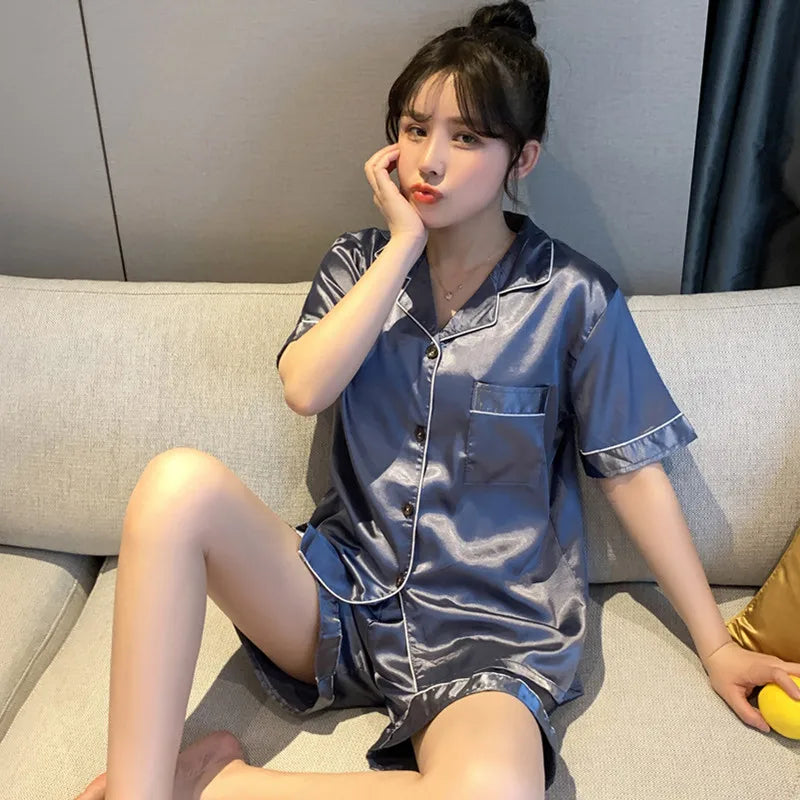Do You Put a Onesie Under Pajamas? Exploring Comfort and Layering for a Good Night's Sleep
Table of Contents
- Introduction
- Understanding Onesies and Their Purpose
- The Benefits of Layering Sleepwear
- When to Consider a Onesie Under Pajamas
- Choosing the Right Pajamas
- Practical Tips for Dressing Your Child for Sleep
- Conclusion: Emphasizing Comfort and Safety
- FAQ
Introduction
When it comes to dressing for sleep, one question lingers in the minds of many parents: Do you put a onesie under pajamas? This simple query opens the door to a broader discussion about comfort, warmth, and practicality in nighttime attire for infants and toddlers. As we navigate the world of sleepwear, it becomes essential to understand how layering can enhance both coziness and functionality for our little ones.
In recent years, the trend of choosing the right sleepwear has taken center stage among parents. With a myriad of options available, the decisions can often feel overwhelming. From classic pajamas to innovative onesies, knowing how to dress your child for a restful sleep is vital. Whether for colder months or simply for added comfort, the idea of layering can make a significant difference.
In this blog post, we will delve into the nuances of sleepwear layering, specifically addressing the role of onesies in conjunction with pajamas. We will explore the benefits of layering sleepwear, how onesies fit into this picture, and what factors to consider when dressing your child for bed. By the end of this article, our aim is to provide you with insights that will support your choices in creating a cozy and safe sleep environment for your child.
As we journey through the topic, we will cover the following key points:
- Understanding Onesies and Their Purpose
- The Benefits of Layering Sleepwear
- When to Consider a Onesie Under Pajamas
- Choosing the Right Pajamas
- Practical Tips for Dressing Your Child for Sleep
- Conclusion: Emphasizing Comfort and Safety
Together, we'll explore how thoughtful layering can contribute to a peaceful and restful night for your little ones.
Understanding Onesies and Their Purpose
Onesies are a staple in many parents' wardrobes, known for their versatility and practicality. These snug-fitting garments were originally designed for babies, but their benefits extend beyond mere infant wear.
What is a Onesie?
A onesie is a one-piece garment that typically covers the torso and has snaps at the crotch, making it easy for diaper changes. They come in various styles, including short-sleeved, long-sleeved, and even footed varieties. The snug fit helps to keep baby warm and secure, preventing drafts and ensuring that clothing stays in place, even during the most active sleep movements.
Benefits of Onesies
- Comfort: Crafted from soft, breathable materials, onesies provide a cozy feel against the skin, which is essential for a good night's sleep.
- Ease of Use: The snap closures make changing diapers quick and hassle-free, minimizing disruptions during nighttime awakenings.
- Versatility: Onesies can be worn alone or as a base layer under other garments, making them suitable for different seasons and temperatures.
- Temperature Regulation: They help retain body heat, making them ideal for colder nights while allowing for breathability in warmer weather.
At Relaxed Nights, we understand the significance of comfort, which is why our collection of nightwear includes beautifully crafted pieces that prioritize softness and functionality. You can explore our Onesies Collection to find the perfect option for your little one.
The Benefits of Layering Sleepwear
Layering sleepwear is not just a trend, but a practical approach to ensuring your child stays comfortable throughout the night.
Why Layering Matters
- Adaptability to Temperature Changes: As temperatures fluctuate, layered clothing allows for easy adjustments. If it gets too warm, you can remove an outer layer without completely undressing your child.
- Enhanced Comfort: Layering can provide extra warmth without overwhelming your child with bulky clothing. A onesie under pajamas can offer a snug fit that is still easy to move in.
- Versatility: Layering allows for creative combinations of styles and fabrics, catering to your child's unique comfort preferences and seasonal needs.
Layering Options
- Onesie Under Pajamas: This classic combination is particularly popular during colder months. The onesie offers a base layer of warmth, while pajamas provide additional coverage and style.
- Sleep Sacks Over Onesies: For infants, sleep sacks can be an excellent alternative to traditional blankets. They keep babies snug and secure while allowing for freedom of movement.
- Footed Pajamas: These can be worn on their own or over a onesie for added warmth, especially in cooler climates.
At Relaxed Nights, we emphasize the importance of quality in our nightwear. Our Night Gowns Collection features elegant options that can be beautifully layered for comfort.
When to Consider a Onesie Under Pajamas
Deciding whether to put a onesie under pajamas can depend on several factors, including:
Temperature and Climate
- Seasonal Considerations: In colder months, adding a onesie under pajamas can provide an extra layer of warmth. Conversely, in warmer weather, you might opt for just a onesie or lightweight pajamas.
- Home Environment: If your home tends to be cooler, especially at night, a onesie can help keep your child warm. Conversely, if the temperature is comfortable, wearing just pajamas may suffice.
Child's Comfort and Preference
- Individual Needs: Some children naturally run colder than others. If your child tends to feel chilly, a onesie can offer that extra bit of warmth.
- Ease of Movement: Consider your child's sleep habits. If they move around a lot at night, a snug onesie can prevent them from feeling constricted while still providing warmth.
Special Occasions
- Traveling: If you're traveling or staying overnight somewhere with uncertain temperature control, layering can help ensure your child remains comfortable regardless of the environment.
- Sleepovers: For older toddlers and young children, if they have sleepovers or share sleeping spaces, a onesie can help keep them cozy and secure.
Choosing the Right Pajamas
When selecting pajamas, it’s essential to consider the fabric, fit, and style to ensure maximum comfort.
Fabric
Opt for pajamas made from breathable and soft materials. Natural fabrics like cotton are ideal as they allow for air circulation and moisture wicking, keeping your child comfortable throughout the night.
Fit
Ensure pajamas fit snugly but are not too tight. A loose fit can lead to tangling or discomfort during sleep, while a snug fit can help in regulating body temperature without compromising mobility.
Styles
- Two-Piece Sets: These are versatile and can be mixed and matched with onesies or other sleepwear.
- Footed Pajamas: Ideal for colder nights, they provide full coverage and warmth, often eliminating the need for additional blankets.
- Nightgowns: A stylish and comfortable option for older children, nightgowns can be layered over onesies for added warmth.
You can explore our Women Sets Collection for elegant sleepwear options that cater to your comfort needs as well.
Practical Tips for Dressing Your Child for Sleep
To ensure your child is dressed comfortably for sleep, consider the following tips:
- Evaluate Room Temperature: The ideal room temperature for sleeping is around 68-72°F (20-22°C). Adjust pajamas and layering based on the current temperature.
- Keep It Simple: During sleep times, simpler is often better. Avoid too many layers that may lead to discomfort or fussiness.
- Check for Tags and Seams: Ensure that there are no irritating tags or seams in areas that may come into contact with your child's skin.
- Monitor Comfort Levels: Keep an eye on your child’s temperature throughout the night. If they seem too warm or cold, adjust their layers accordingly.
- Make It Interactive: Allow your child to be part of the dressing process. Involving them can make bedtime routines smoother and more enjoyable.
Conclusion: Emphasizing Comfort and Safety
In summary, the question of whether to put a onesie under pajamas ultimately depends on a variety of factors, including temperature, individual comfort, and practicality. Layering sleepwear with a onesie can enhance warmth and coziness while ensuring ease of use during diaper changes.
As parents and caregivers, it’s essential to prioritize comfort and safety when selecting sleepwear. At Relaxed Nights, we are committed to providing high-quality nightwear that embodies elegance and comfort, allowing you to embrace restful nights with confidence.
Feel free to explore our curated collections for nightwear that suits your family's needs. Together, we can create beautiful nighttime routines that prioritize comfort and tranquility.
FAQ
1. Should I always put a onesie under pajamas? While not always necessary, putting a onesie under pajamas is beneficial in colder weather or if your child tends to feel chilly at night.
2. What materials are best for pajamas and onesies? Soft, breathable fabrics like cotton are ideal as they regulate temperature and wick away moisture.
3. How do I know if my child is too warm or too cold at night? Signs of discomfort can include sweating, restlessness, or cold extremities. Monitor their temperature and adjust layers as needed.
4. Are there any safety concerns with layering sleepwear? Always ensure that sleepwear fits properly and is free of loose fabrics that may cause entanglement. Avoid using heavy blankets for infants and young toddlers.
5. Can I use a sleep sack in place of pajamas? Yes, sleep sacks are a great alternative to pajamas, especially for infants, as they provide warmth without the risk of suffocation from blankets.
We hope this guide has illuminated the importance of thoughtful sleepwear choices for your child. Here's to cozy nights and sweet dreams!



